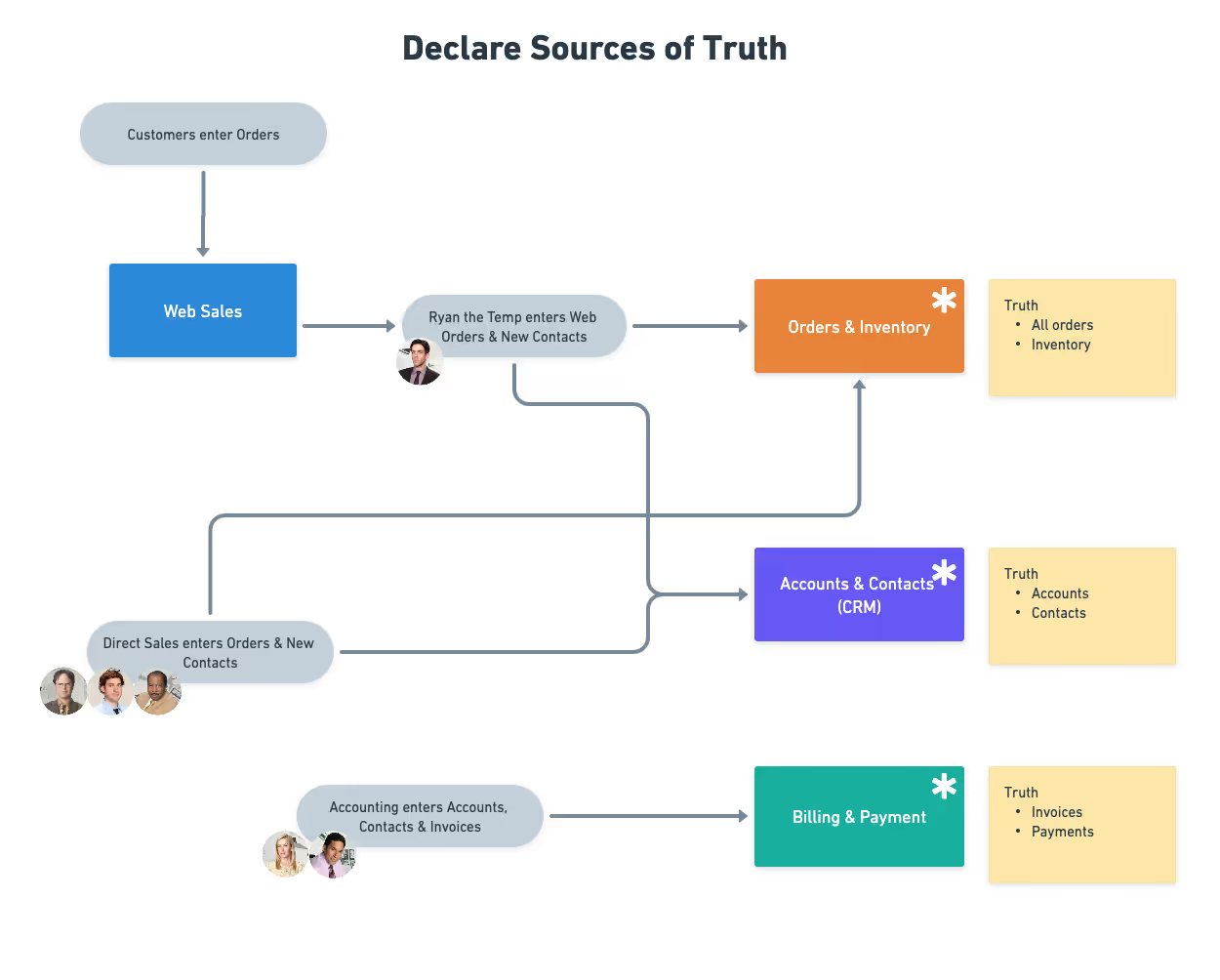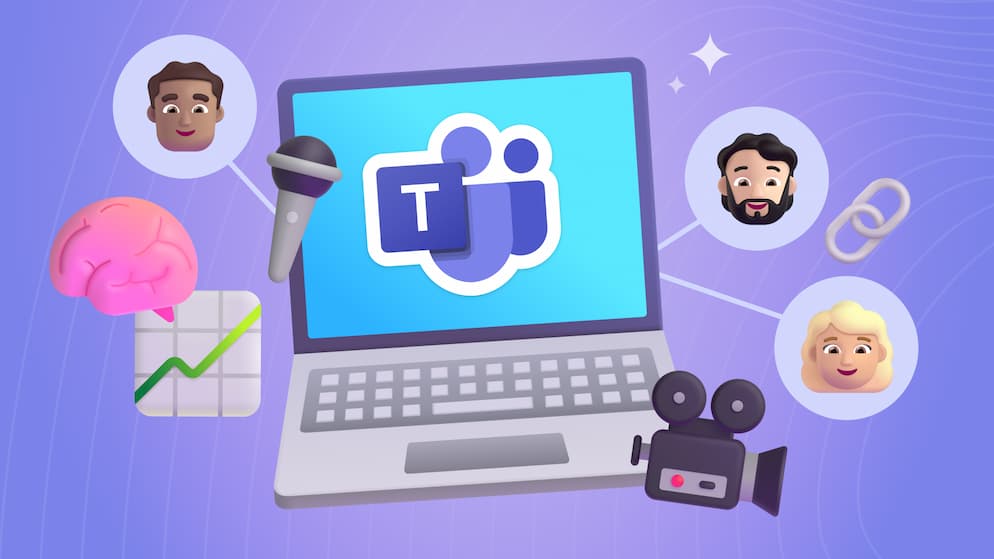Stop Entering Data in Two Places — Here's Why
It's time to end the madness of trying to find the "final" or "correct" data. In today's blog we're going to explain why you should stop entering data into two (or more) places.
Introduction
Have you ever spent time sorting out what is correct? Ever felt embarrassed when addressing someone with the wrong name? Ever been frustrated by busy work, or heard others complaining about it? Information and data are at the heart of every organization. It is the life blood running through the arteries of a healthy business.
The data and information that supports every business should flow optimally. That flow all begins with data entry. In this blog we’re going to discuss how entering data in more than one place can be a problem. And then I’m going to call out the steps to fix it.
Accuracy
The first, and probably most obvious is accuracy. If data is being entered in more than one place, even if it’s being done by the same person, mistakes will happen. And when this does happen, you’re left with the necessity to choose which version is correct. Afterall, if the quantity is 100 the discount is 1% and if the quantity is 1000 the discount is 5%. Oh, wait, are we supposed to be shipping 100 widgets or 1000 gizmos? Can someone go down to the warehouse and count how many gizmos are on the shelf?
Time
Ok, so Stanley reached out to the customer and confirmed that they ordered 100 widgets. Daryl, from the warehouse, just emailed and confirmed that we have 1500 gizmos left and he thinks there are 2000 on order scheduled to be here next month. Whew! Crisis averted. But let’s face it, we just spend a half day and at least 3 people’s time trying to figure out the truth. Not to mention, Ryan the Temp spent time transcribing orders from the new online system into the order fulfillment spreadsheet. I think I figured out where the problem started. I’ll schedule a sit down with Ryan and make sure this doesn’t happen again.
And now we know the second reason entering data in more than one place is problematic... it wastes time. Wasting time seemed to be a central theme of one of our favorite sitcoms, so I thought that was a good analogy 😊
Happiness
It’s been a couple days since we cleaned up that mess now. Finally had a chance to sit down with Ryan. It seems that he’s not very happy and super annoyed that he has to copy new orders into the spreadsheet every morning. He feels it is just busy work, a waste of his time, and that we should put something in place to automatically send online orders to the warehouse for fulfillment. I guess that’s reason number three, it’s annoying!
As it turns out, there’s a lot of truth in this. Good people really despise wasting their time. You might even say the word hate is an understatement of how people feel when their time and energy is used for this type of busy work.

SELF ASSESSMENT
Is your business getting full value from your M365 subscription?
Billions of dollars are wasted each year on underused subscriptions. Take 3 minutes to find out where your tools are driving results, and where they’re holding you back.
Find Out Now

Is Team Communication Holding You Back?
Find Out in Just 2 Minutes.
Take our quick scorecard to uncover communication gaps and hidden barriers within your team.
But... I Need a Copy
Ok, you say you need a copy. There are times where a copy can be useful. Maybe you need to print a copy because it’s annual inventory time. We’re all going to stay late and reconcile what is in the warehouse. Or maybe, you need a copy of the data so that you can perform some research and analytics on it. Maybe you need to apply some what-if scenarios and you simply cannot do that within the inventory system.
These are justifiable scenarios. The real question is what else are you going to do with that copy? If the intent only goes as far as analysis and what-if, then you’re on the right path. The copy can never be used as an alternative to the source from where it came.
Here's How You Can Fix It
So if this is happening in your organization, there are a few high-level steps that you should take to fix it.
First, identify all the places where this is happening. Figure out where data originates, where it accumulates, and who or what is consuming it. You might even create a data flow diagram, a map, of how your data flows through your organization, to help with this step. It is important to identify where and how your data is being used before you move to the next step.

Now that you’ve identified what, how, and when, the next thing is to declare a source of truth for each type of data. You need to move away from entering data in multiple systems and your systems should not compete for being the source of truth. Even if the same data must exist in multiple systems, you must declare one of those as the source of truth. It is often a safe bet that this would be the system in which data first comes into existence.
This is often the system that is closest to the original data entry point. However, if done correctly, a downstream system which aggregates multiple sources can be declared as a source of truth for the combined information.

The next step will be to identify and implement a strategy for integration with any downstream systems. Note, hiring a temp to sit at a workstation and transcribe information is NOT an integration strategy, and they will be unhappy. Let’s bring in the data flow diagram again, this time, re-envisioning the flow in a world where we have declared sources of truth. Where does data enter the organization? What systems “own” the data? What systems consume the data? This new map should quickly identify what integration is needed. Once you have this clarity, you can dive deeper into the how of integration options.

Lastly, if you have the additional need to create copies of data, maybe even from multiple systems, make sure that those copies are all flowing from the declared sources of truth. Then, ensure that you have a plan in place to refresh your copies from the source in a regular basis. This will help to keep your organization from letting copies themselves become sources of truth.
Conclusion
Entering data more than once is an obvious problem. It goes without saying that double data entry can create confusion, waste time, is annoying, and seems stupid. It takes some time and commitment to a better vision, but in the end, you will make better decisions, faster, and your people will feel more effective.







.jpg)







